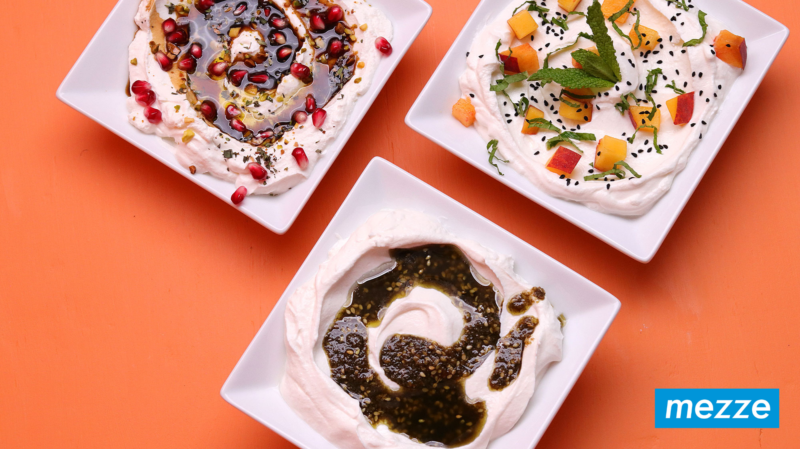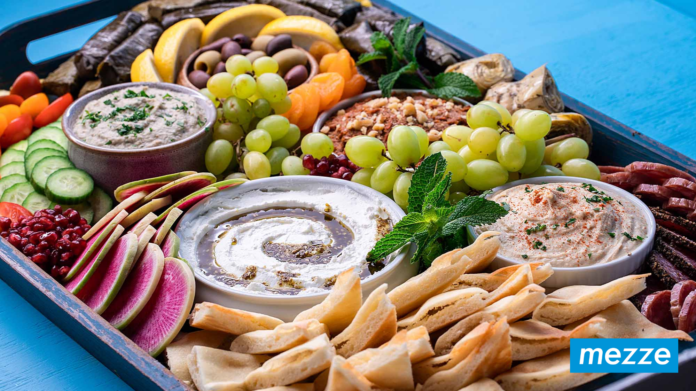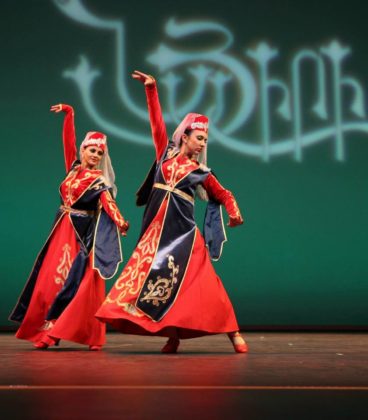PLAYA DEL CARMEN, Mexico – Years after putting on an apron for the first time when she was only 17, chef and entrepreneur Crista Marie Ani Aladjadjian traveled 31 countries, discovered world cuisines and created Mezze, a platform that introduces food and culinary cultures from “the rest of the world.” We agreed that I could call her Crista for short, while discussing the future of the food industry on Zoom. She was in Playa Del Carmen, Mexico, while I spoke from her hometown of Los Angeles. Crista has been in Mexico since January, promoting remotely Middle Eastern cuisine through her new platform and telling stories about ethnic food that excite all the possible taste buds of those millions of viewers and followers. And the name comes out just right for the platform, Mezze, meaning in the original Persian, to taste, which became a way of living for these last years of Crista’s life constantly on the road, living like a “nomad.”

“A mezze spread has different flavors and colors, textures and foods. Your life is a white canvas and you paint it with food. You can paint with experiences and travel the same way you enjoy a mezze spread. And I also love the idea of sharing: on the mezze table everyone is sharing, talking and the energy at that table perfectly embodies our mission,” she explains.

Pomegranate Molasses and Pistachios; Original Mezze Recipe
After 13 years of building a career as a chef, in 2017 Crista was offered the role of the Culinary Director at a new food media company called Cocina, which intended to elevate Latin cuisine. She was the perfect candidate, having Latin roots on her mother’s side. Crista’s maternal grandparents are from Mexico and Spain, where her mother grew up. However, work at Cocina created the perfect opportunity to think about her paternal Armenian side as well.

“Seeing the success of the brand of my Latin roots, I thought ‘hey, what about my Armenian heritage and culture!’ So that’s what inspired the whole idea of Mezze.”
Christa’s grandfather Krikor Aladjadjian was born in Syria and grew up in Jordan. He immigrated to Detroit, Michigan, when he was 18. He got an education, served in the army and was very much involved in the Armenian community. Young Krikor sung in the local Armenian church choir where he met Crista’s grandmother, whose parents were survivors of the Armenian Genocide. One day in 1964, Krikor received a phone call from Gabriel Injejikian inviting him to move to Los Angeles and become one of the first teachers in Holy Martyrs Ferrahian High School. In fact, Crista’s father also became one of the first graduates of the school. The family tradition continued, as Crista, her brother and sister received their education from the same school.

Through that same establishment Crista found her other passion, dance. She joined the Hamazkayin Niari Dance Ensemble. “Even though we weren’t able to stay in Ferrahian and finish school, through the dance I was able to stay connected to my culture. My director Catherine Hayrabedian was the one who really helped me preserve that connection to my Armenian heritage. She is a very big part of what inspired me to build a business around culture,” Crista acknowledges with gratitude.













